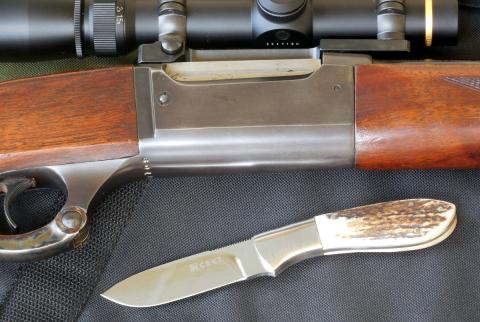IN PRAISE OF OLDER RIFLES
Ned Roberts pointed out, many years ago, that in fact America’s first smokeless sporting round was the .30-40 Krag. It was chambered in the Winchester High Wall a couple of years before the Model 94 appeared in .30-30.
If you put a .30-30 cartridge beside a .303 Savage, it’s almost impossible to tell them apart from more than a few feet away. They are the proverbial peas in a pod, both in looks and ballistics, although the .303 established a reputation for better penetration on really big game because it was loaded with a 190-grain bullet. This made it a particular favorite among Canadian moose hunters, and Canada’s Dominion Cartridge Co. kept it in production long after it was abandoned in the U.S.
Today, the .303 Savage would be of little interest except for the fact that a good many really nice old Savage lever rifles were chambered for it. Altogether, about a million Savage 99s were produced over the course of a century; of those, possibly a quarter were chambered in .303 Savage. It’s impractical to rechamber or rebarrel those to something more common, so unless you can find or make some .303 Savage ammunition, you are out of luck. Your nice old rifle becomes a wall-hanger.
The upside of this, however, is that you can pick up a 99 in .303 Savage for a song, unless it’s a big-money collector’s item for some reason. Savage made the .303 in a wide variety of configurations. At various times, I have owned them with 26-inch barrels, 22-inch featherweights, and one takedown with a 20-inch barrel. My current one, made around 1912, has a 26-inch barrel and a straight-grip American walnut stock with a steel rifle-style buttplate.
The Savage 99 action is very strong, which gives you considerable leeway when it comes to loading your own. This is important, since modern loading data hard to come by. And, right off the bat, there is an additional complication. There is a disparity in bore diameter and bullet size, and no one knows the definitive answer. Supposedly, early .303s had a bore diameter of .311, like the .303 British. Somewhere along the line, this was changed to .308. With any old 99, it’s a good idea to slug the bore.
Back around 2004, Huntington Die Specialties commissioned Norma to produce a generous run of .303 Savage brass, and they still have it in stock. This solves the major difficulty. If your rifle is .308 diameter, as most seem to be, there are many different bullets available. Barnes even makes their .308 “Original” in 190 grains.
Load data, of course, is another question. There ain’t none — at least, none newer than the Lyman Ideal Manual #45, which came out in 1969, wherein it is listed under “obsolete cartridges.” Since this calls for readily available powders like 4064, 3031, 4895, and 4320, there is no problem.
One can also have fun working with a wider variety of bullet weights than Arthur Savage ever envisioned for his baby. I’ve loaded everything from 100-grain pest bullets, to Speer’s 130-grain flat point, to various 150-grain round-noses, and the Barnes 190-grain. Two limiting factors are the strength of the extractor, which does not do well with stuck cases, and the length of the magazine. The .303 Savage has the same problem later faced by the .250-3000 and .300 Savage, which is that you have to seat bullets deep to fit in the magazine, and that limits both bullet size and powder capacity.
Even with those limitations, though, the possibilities are almost endless because of the rotary magazine (allowing spitzer bullets) and strong action. Old Savage 99s were beautifully made of the best materials available, and put together by craftsmen. Many received hard use, but even a 99 that looks like it’s been through the mill — and many were — usually still work well, and they’re a pleasure to use. They deserve a better fate than hanging on a wall.–Terry Wieland


